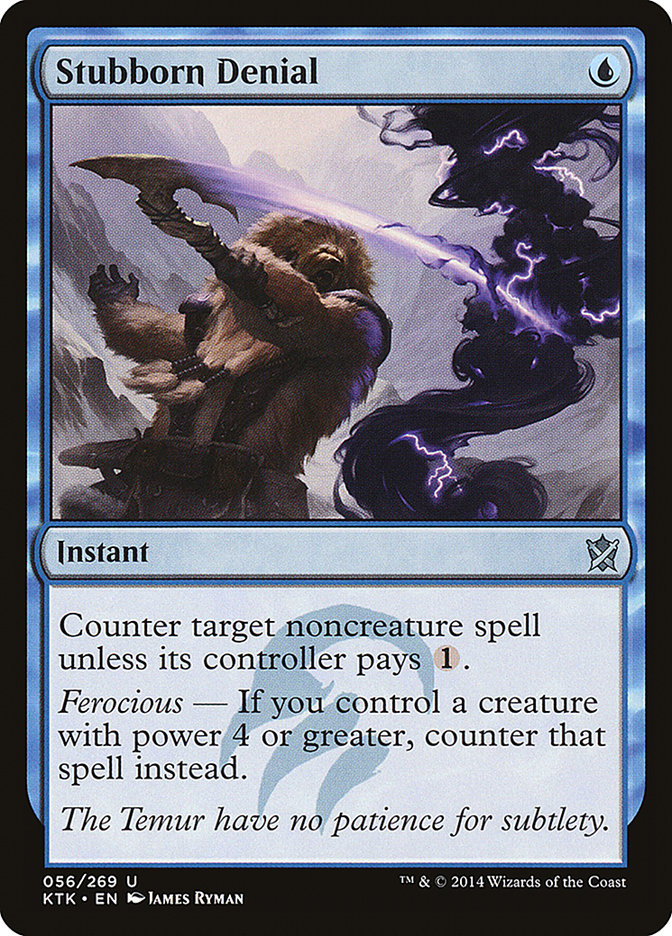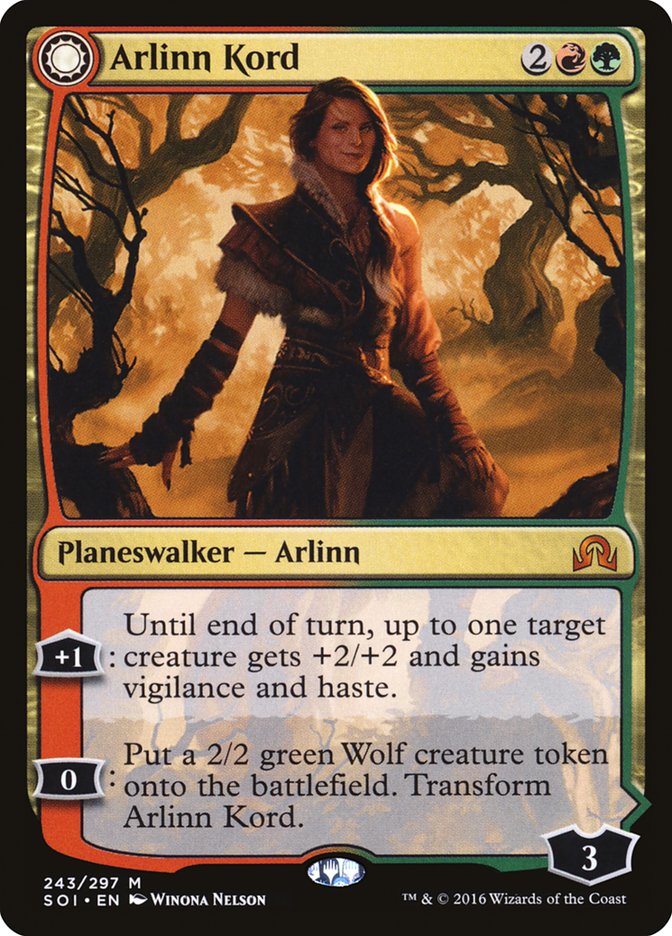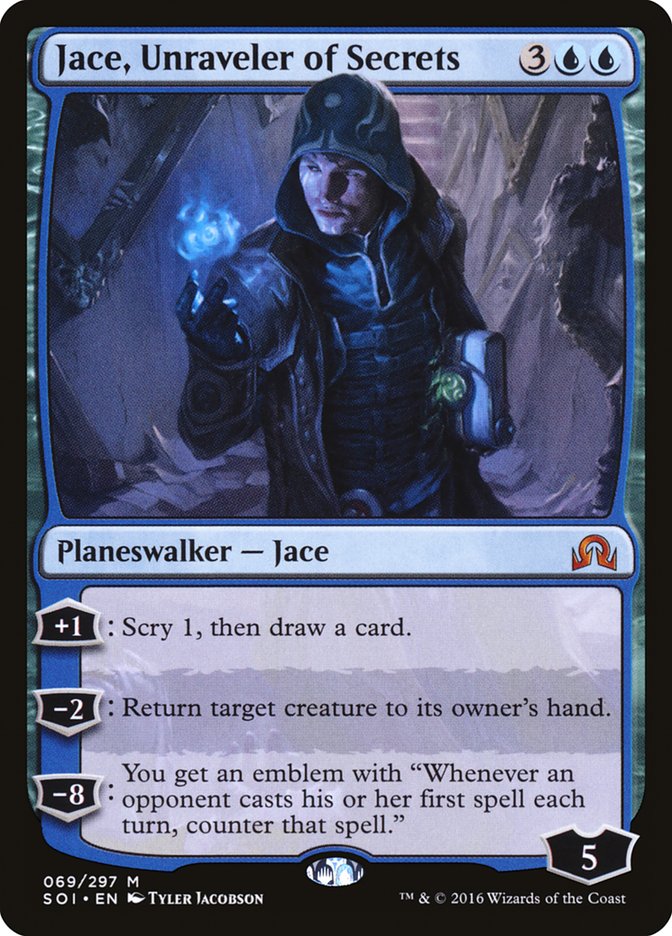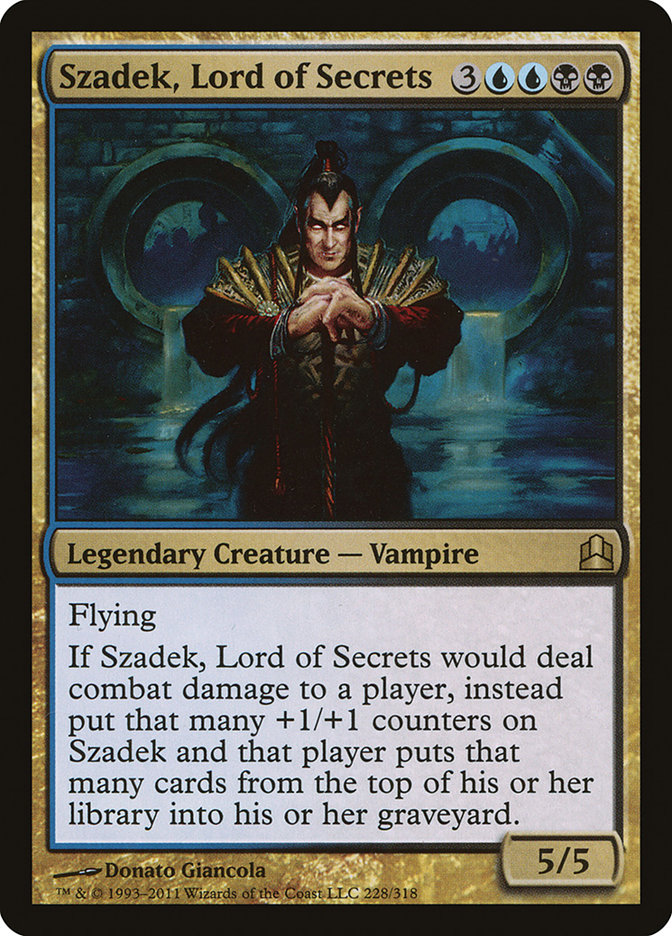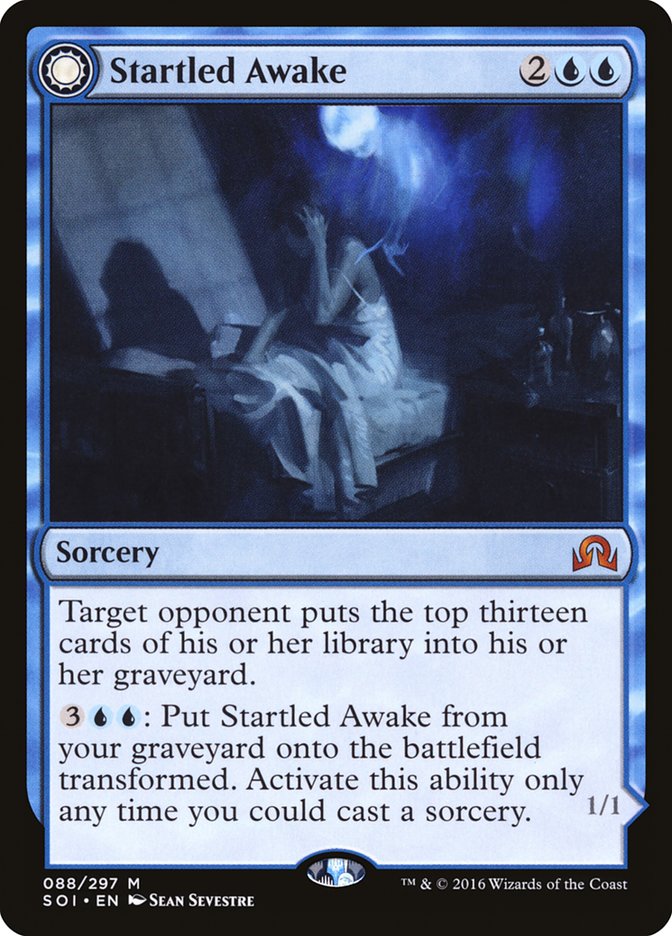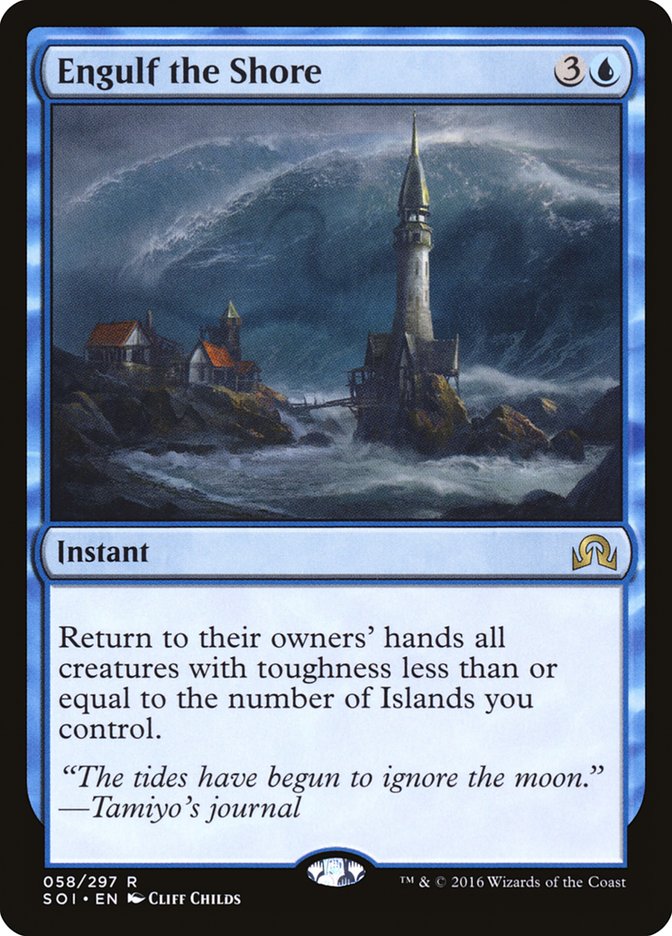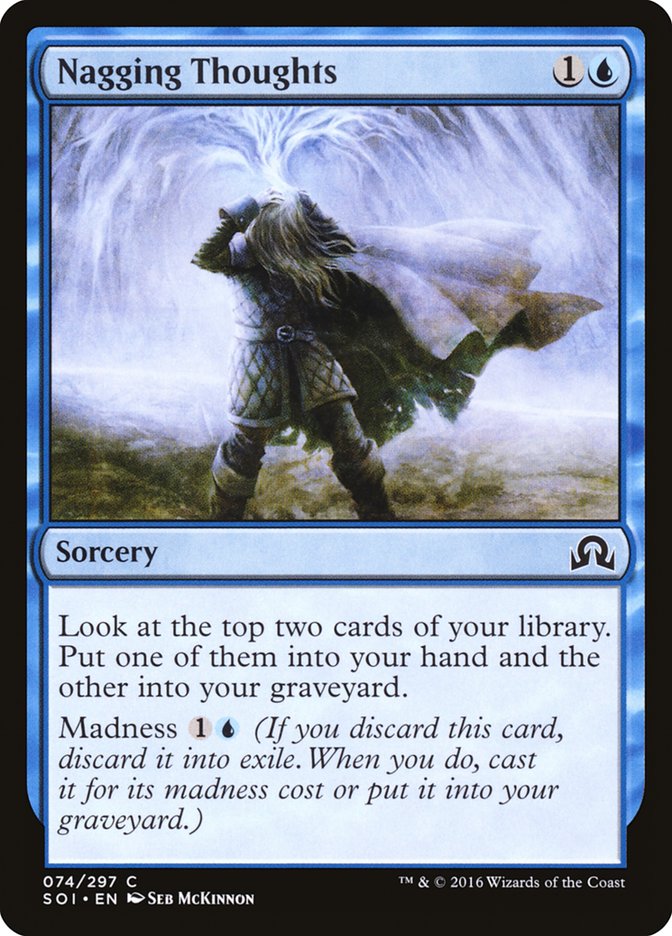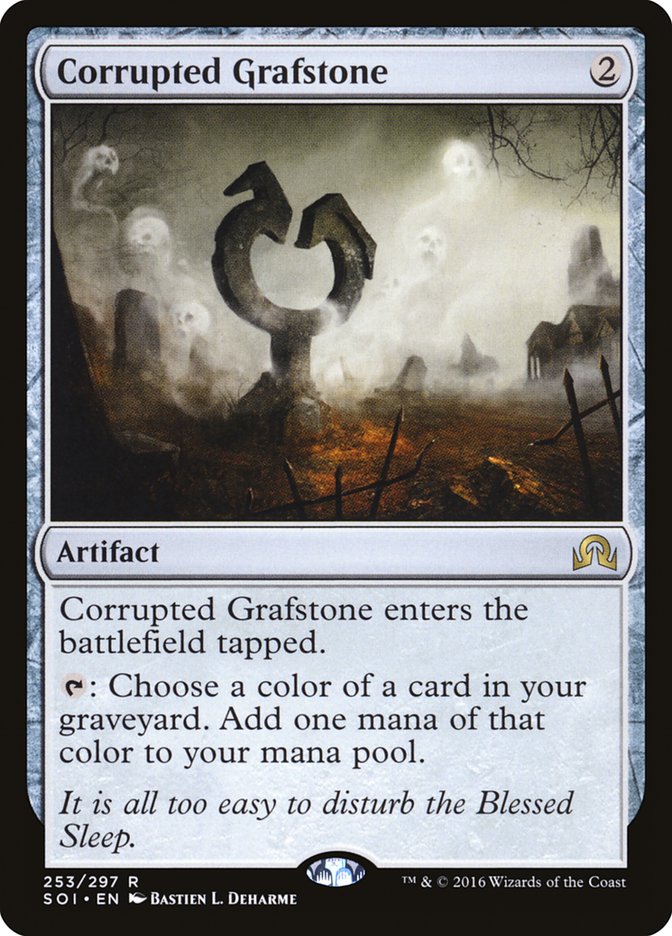After seeing a Standard that revolved around the same handful of powerful cards, expensive lands, and topdeck matches, we’re ready for something new.
Normally, we don’t like change. We get into a pattern, the newness of a fresh experience settles into the status quo, and then we’re upset when we’ve committed to the way things were.
Shadows over Innistrad is about to disrupt that pattern.
By now, you’ll have had the chance to review all 297 of the newest cards to join the Standard format, forcefully shoving out Khans of Tarkir and Fate Reforged. Most of the players I know are happy to see the format’s most powerful cards rotate out: Siege Rhino, Rally the Ancestors, Dig Through Time, and the fetchlands are all disappearing from decklists on April 8th. Deckbuilders had gotten comfortable in a format of haymakers, role-players, and easy mana. Next Friday, all that will change. The metagame will change, too; mana will be both imperfect and more financially obtainable, with no color-producing land costing more than $10.00 a copy. Delve, the most powerful mechanic in Standard, will be gone. Ugin, the Spirit Dragon won’t be the magical topdeck to save a player from an unwinnable battlefield state. Shuffling will be less frequent thanks to the retirement of fetchlands. All these things together will create a very different experience at the table.
Shadows over Innistrad is, at first glance, the most true-to-form return to a previous plane I’ve seen to date. Between the on-flavor returning mechanic, madness, and the new graveyard-centered mechanic, delirium, classic horror tropes are fleshed out in the same top-down design paradigm that made Innistrad one of my personal favorites both in Constructed and Limited. For the first time in several sets, we appear to be a returning to a synergy-focused Standard. Are there format-defining haymakers in this set? Sure! Archangel Avacyn, Arlinn Kord, and Jace, Unraveler of Secrets will all be powerful cards rushing in to fill the vacuum left by the departure of our former Standard’s titans, but there are other cards that require special handling and a deck to support them.
Every new set brings this kind of excitement, but this set feels different. I can’t wait to see what the newest Standard has in store. More on that in a moment.
When I started playing Magic, the original Ravnica set had been out for a few months. It was the fall of 2006, and I had just returned to the world of collectible card gaming thanks to my freshman-year college roommate. I played the Pokemon Trading Card Game with him, but several folks on campus got together almost every night to play another game, Magic: The Gathering. I knew that, at least at one time, both games were made by the same company and that Magic’s rules were similar to Pokemon: “energy” was like “mana,” and instead of Trainers, you had spells that you cast with effects. Beyond that, though, I was in the dark.
In January 2006, the week before I returned from my winter break, I went to Scotland with my mother, who was on a research trip for a book she was writing. While there, my bloodlust for cards had been piqued, and I was on the lookout for a shop that sold singles, boosters, sleeves, anything to sate the need to play. We spent most of our time in the country, but near the end of the trip, we came to Edinburgh, the country’s capital, and explored the city’s winding cobblestone streets, ancient history, and impressive castles, closes, and cafes.
After visiting an attraction on the city’s main drag, we turned onto a side street where I encountered the shop I’d been waiting for: a game shop, complete with all the goods I’d been needing to get my fix. I strolled in and looked around, basking in the nerdiness of comic and games shop, smelling the ink and breathing in the wintry air that drifted in with me. It appears that boosters and the like were behind the counter in this particular shop, and I quickly perused their selection over the shoulder of the cashier, looking for the familiar branding of my preferred game. No luck. They did, however, have a single deck of Magic for sale. After seeing and hearing a good deal about Magic, I decided to bite. Didn’t have what I was looking for, so I guess I’ll look through a Magic deck instead.
Twelve pounds sterling later, I had a factory-sealed deck in my hand. Two dots, one black and one blue, sat overtop a picture of a pale Human Wizard, the Ravnica set symbol superimposed over his lower half. I’d purchased a Dimir deck, and I ripped it open as soon as I got back to the hotel. Long after my mother had gone to sleep, I borrowed her computer. I shuffled up my own deck, confused about the vast majority of the symbols, but I tried the online tutorials, vaguely understanding the concepts presented within them. Most decks seemed to be about attacking and blocking, but none of my Vedalken Entrancers and Belltower Sphinxes seemed very powerful, costing a lot of mana and only dealing a small amount of damage.
The only card I really liked was Szadek, Lord of Secrets. Now this guy seemed good!
I was excited to try out my deck back home, having all my friends teach me the finer points of playing. I got back to the States and returned to school, deck in hand, ready to sling cards for the first time. They all kindly showed me how to play and then destroyed me with their own decks. I still tried to win through damage most games, using my spells because I had them and not because I knew how to win with them. Honestly, the whole time I just wanted to cast Szadek, Lord of Secrets.
The first time I did and I successfully attacked with him, I was ecstatic to deal five points of damage with one creature! After I told them where their life total should be, my opponent corrected me, saying that instead they put five cards into their graveyard and Szadek gained counters. I had purchased what they call a “mill” deck, a deck that uses an alternative win condition of destroying a player’s library. Ever since then, I’ve made decks with different cards, different strategies, and unique interactions.
Last week, I returned from my second trip to Scotland. We stopped in Edinburgh, just like I did ten years ago, in the same shop.

A lot had changed in a decade. They sold far more POP! figurines then comic books or other collectibles, but their Magic boosters still sat behind the counter for purchase. I picked up a pack, coincidentally, of Magic Origins as a nod to that fateful day a decade ago.
Ten years, friends, fun, and lots of great memories.
The main reason I told you this story is to give you a bit of context on why I chose today’s deck when there are many others I could have highlighted first. Milling is at the very origins of Magic for me, so after a trip to the birthplace of my love for the game, I was feeling a bit nostalgic and thought it appropriate to revisit that archetype, especially in a time where everything is changing.
The first time I saw Traumatize, I thought I’d never stop smiling. Startled Awake would have made college-age-me flip my freaking lid. A mill spell that’s also a creature? What a world!
In the Standard of 2016, milling is all but inaccessible. Very little exists in the way of support both offensively and defensively, and against the kinds of decks where milling would perhaps be the most effective, the larger graveyards helped thanks to cards like Den Protector, Dig Through Time, and Tasigur, the Golden Fang. With most of those offenders gone and the introduction of this new spell, mill might have a chance to shine again given the right combination of creatures, spells, and support.
Creatures (5)
Planeswalkers (2)
Lands (24)
Spells (29)

Two things I’ll note before proceeding. First, look at how many new cards feature in this list! Their presence is not just a publicity stunt for the new set; whole new styles of play have become enabled thanks to this set’s design and support plan. Second, you’ll notice the deck’s just one color. While black originally played into the plan, black is not nearly as supportive of mill as it used to be, and even after considering some auxiliary black spells, I decided against it in favor of a mono-blue build. Being mono-colored is a tactical choice now rather than an economic one. Remember, manabases are about to get way cheaper!
As a third note, no, there are no copies of Jace, Vryn’s Prodigy. That is an economic choice.
Creatures
Mill decks are rarely about the creatures in them. With the exception of Hedron Crab, most Modern-viable mill decks play almost no creatures at all. Undead Alchemist aside, there’s little place for a creature-based mill plan, even in Casual circles.
Here, Harbinger of the Tides is a clear winner for the deck in the defense department. The mono-blue nature of the deck makes it a breeze to cast, and you can return it to your hand in a multitude of ways to save it from death or to reuse its trigger. Even if it dies, we can use the “creature” line to bolster our delirium count! Spoiler alert for the foreseeable future: be prepared to hear about the delirium count a lot.
Geralf’s Masterpiece, much in the same vein as its closest cousin Skaab Ruinator, is a big flying monster that’s really hard to permanently deal with. While a three-card cost is nothing to sneeze at, this durable undead machination can close the game when all else fails.
Spells
Front and center, we see perhaps the most compelling reason to be mono-blue: Engulf the Shore.
We’ve seen cards like this before: Whelming Wave, Aetherize, and even the currently-legal Crush of Tentacles, to name a few. However, this is an instant-speed four-mana pickup of everything that you can grab, and it only gets more powerful as the game goes on without any real cost change. Engulf the Shore has all the makings of a blue control superstar, but only time and practice will tell if this is what the deck needs to stay alive.
While mine is clearly a mill deck, the density of mill spells is low. Startled Awake has a set, and Talent of the Telepath has just two copies. The deck features a lot of ways to find them, and Startled Awake can be rebought, albeit slowly, using its activated ability. And hey, I can even regress and attack in my mill deck, if I wanted to.
Nagging Thoughts is a bizarre new card. Unlike the seemingly superior Anticipate, Nagging Thoughts puts two cards in the graveyard, which in turn supports the rest of the deck’s strategy. Several spells rely on or check the graveyard for one reason or another. For example, Send to Sleep, which is usually a mediocre removal spell, can be fully enabled by just one Nagging Thoughts. Any discard effect, such as from activating Geralf’s Masterpiece or an Artificer’s Epiphany toss, allows me to cast this instead of discarding it.
Pieces of the Puzzle also contributes greatly to the graveyard-centered plan of the deck, digging deep to find our removal and mill spells. Compelling Deterrence, a card I’m sure will find a much more relevant application elsewhere, is still strictly better than Disperse, even if I only have one Zombie to pair with it.
Eight noncreature permanent spells round out the list. Corrupted Grafstone likes spells in the graveyard. On turn 2, you can cast the Grafstone and then cast two spells on turn 3 to make up for the turn you took off. Hedron Archive lets us add an artifact to the delirium count at will and helps us power out some of our more expensive costs, such as rebuying Startled Awake. Although I don’t have the old Jace, I really like the new Jace, Unraveler of Secrets better here anyway. The new Jace seems like the Jace we’ve been expecting for a long time. His -2 is reminiscent of his most powerful iteration without being unfair, and his +1 seems exceptional in a more discerning deck. I’m pretty sure he never ultimates, but his first two modes are good enough!
Lands
I always get excited about new lands, but Drownyard Temple seems like a really fun one to me. We’re binning a lot of cards in this deck, and chances are this land will slide to the graveyard a lot. This not only helps me recover them from the brink, but it also lets you ramp. Nice Zoetic Cavern impression! Mirrorpool can copy our main spells, but it can also create another Harbinger of the Tides in a pinch to bounce an attacker. Sea Gate Wreckage can help me recharge after returning the Masterpiece, and it provides another colorless source for Mirrorpool’s activations. While I could have played Blighted Cataract, Skyline Cascade, or a number of other nifty utility lands in this mono-colored deck, the Island count needs to be sufficiently high for Engulf the Shore to not be embarrassing.
Sideboard
Pre-format sideboards are always speculative at best, but I usually try to take things as anti-aggro and anti-control. The two playsets help against aggro. Dampening Pulse stuffs most tokens and takes the edge off high-powered creatures, which we can still take down with our bounce effects. Manic Scribe can block an aggro deck’s two-power creatures without a problem, and you’ll never want to spend a spell to kill them, making them ideal blockers as you build delirium and slowly mill away your opponent.
Dispel is standard fare these days, but I’m excited to try Invasive Surgery. Duress is a control deck’s worst enemy in a mirror match, and this shuts that tool down hard. Nissa’s Pilgrimage or Explosive Vegetation can also be destroyed this way, as can Painful Truths, non-mastery Exquisite Firecraft, and many more. Confirm Suspicions is a nice combination of Dragonlord’s Prerogative and Cancel. You can solve the Clues at your convenience while still having a reactive spell available! A third copy of Talent of the Telepath sneaks in when you’re fighting countermagic as some extra insurance.
Mill is never far from my heart. I still have the Szadek, Lord of Secrets in my binder after all these years, and I’ll always keep it as a reminder of my roots. Many things have changed since then, but mill might have a chance again as the format continues to evolve with each new set. What new strategy will you try with the world in front of you?


